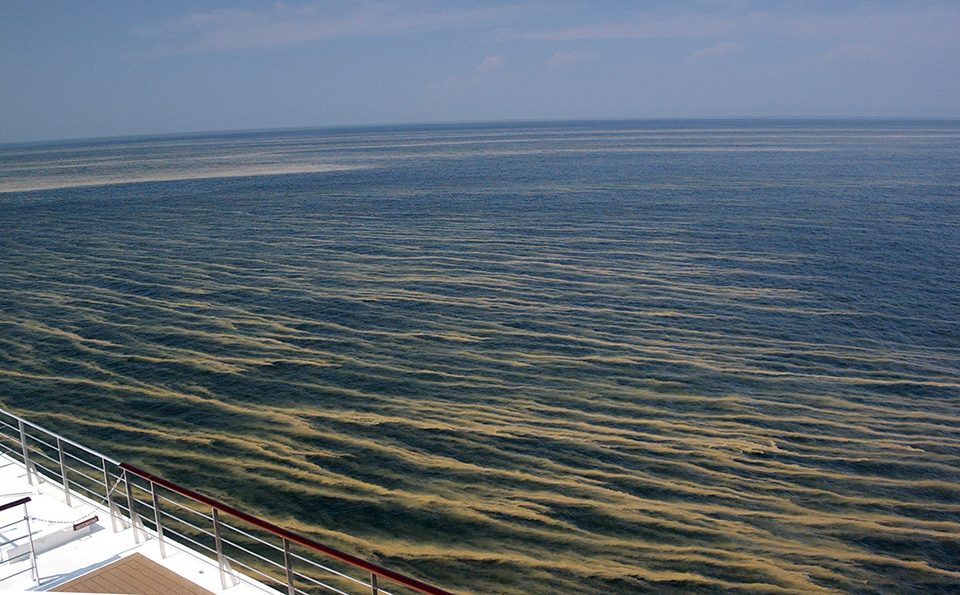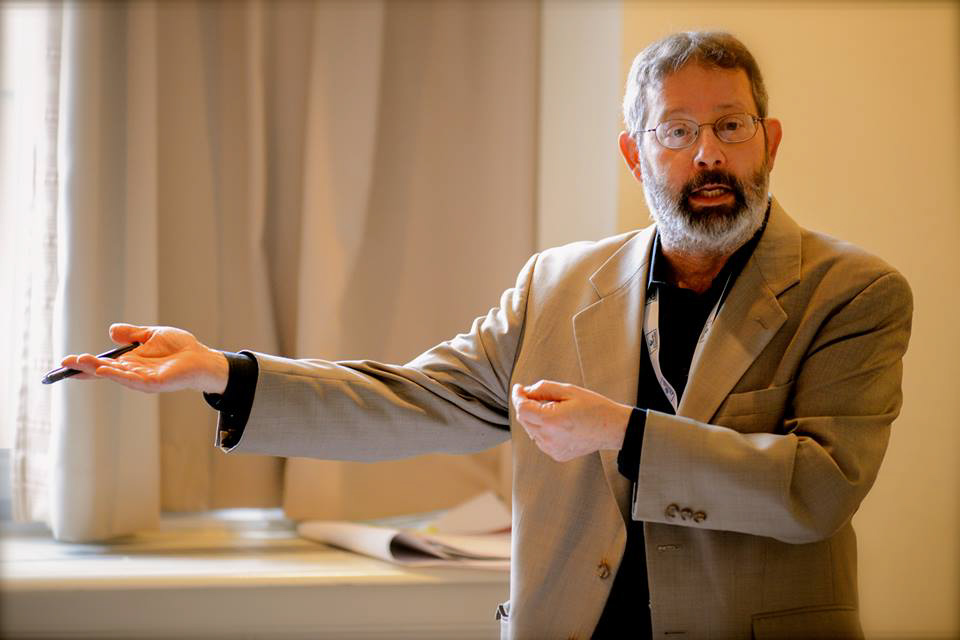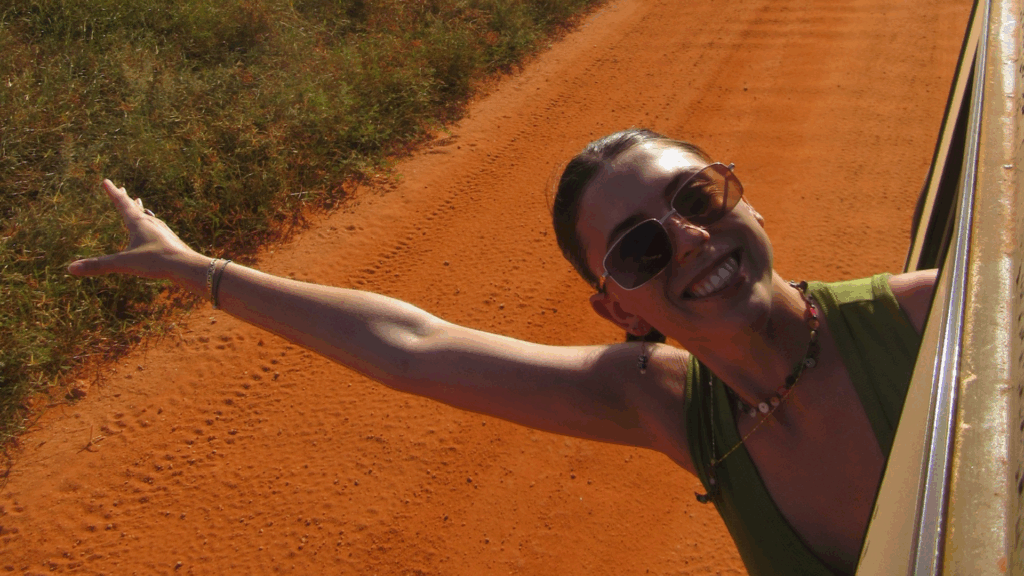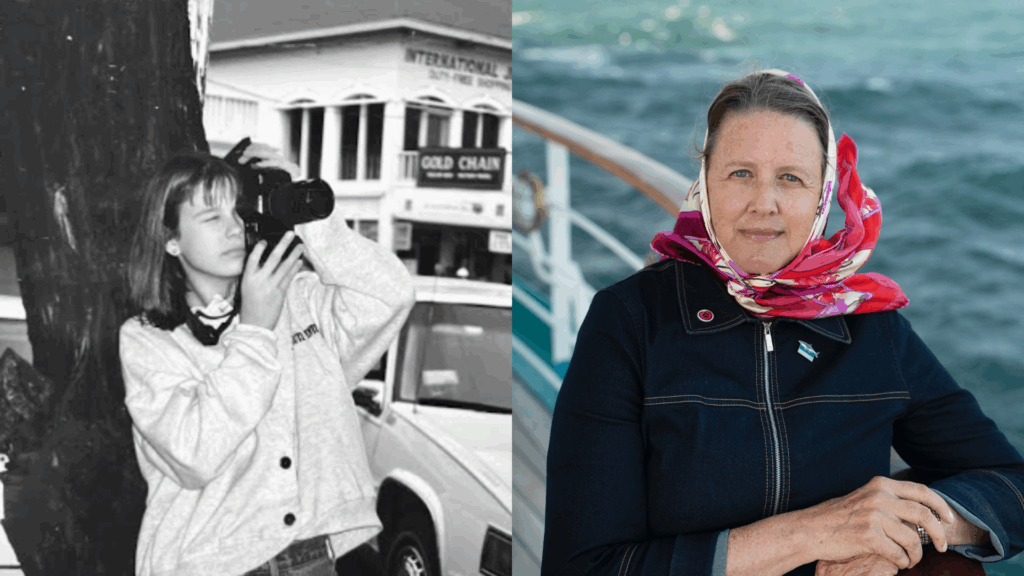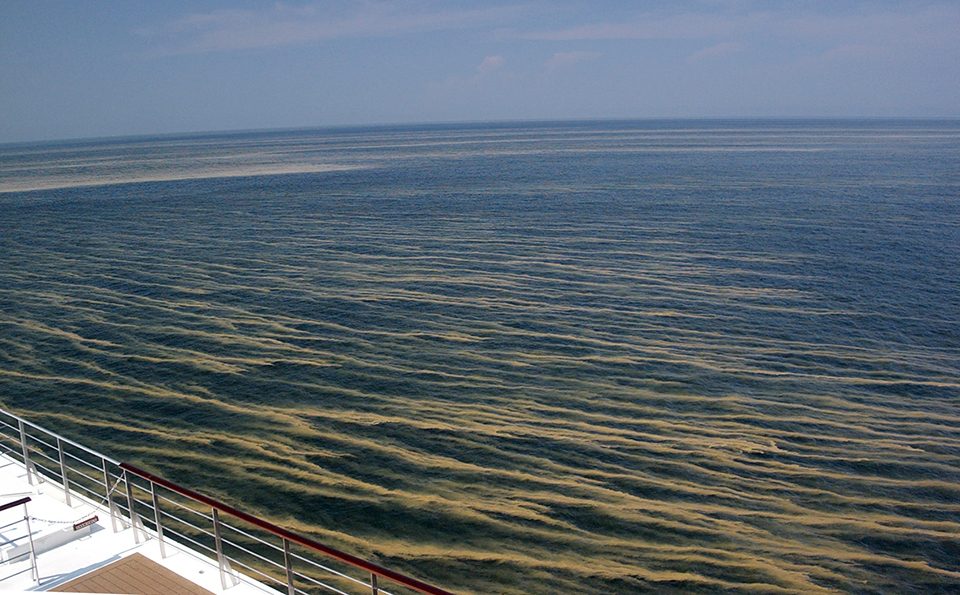
A calm Baltic, balmy temperature, and blue skies – it would be criminal, stunningly criminal, to show my 0920 Marine Biology class a PowerPoint on the Baltic Sea in a darkened room when the MV Explorer was plying through its waters on such a magnificent July day.
So, instead we mustered on deck 7 aft, and as 30 enthusiastic but sleepy students nestled into their deck chairs, I expansively gestured to the waters surrounding us, delighted to be so fortunate as to teach outside and at sea, and began to educate them about the Baltic Sea, the world’s largest brackish water estuary. Twenty or so minutes later I had finished the geological history and setting of the Baltic, as well as its physical and biological characteristics. Almost time to head back to class.
Then, ironically appearing as I was about to discuss the impact of humans on the Baltic, to port, starboard, fore, and aft were stains of brown stripes on the water’s surface as far as the eye could see, scars so immense that they were visible from space.
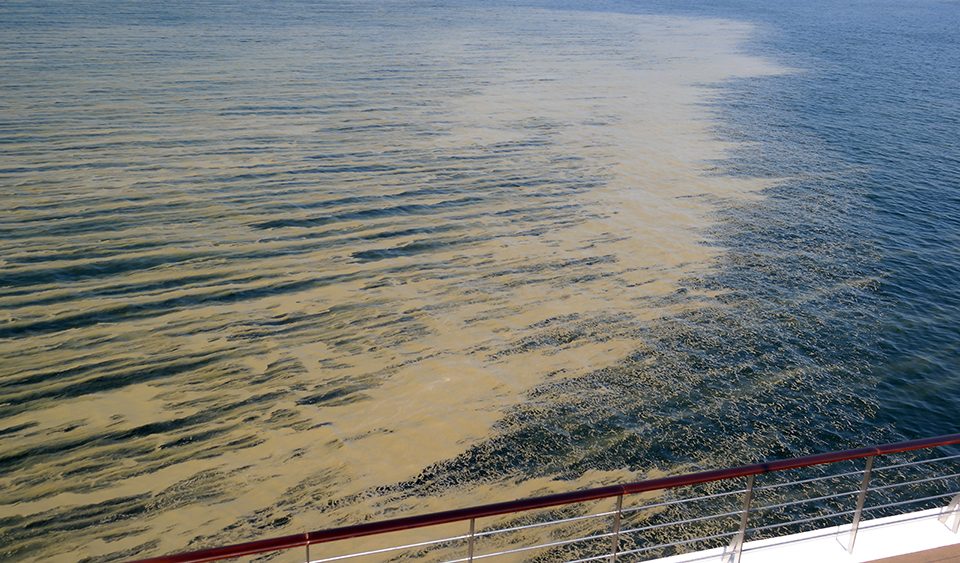
What we were witnessing, and would see for hours as we sailed towards St. Petersburg, Russia, from Oslo, Norway, was technically a cyanobacterial bloom. The “beast” responsible for the stain was likely the blue-green bacterium Aphanizomenon flos-aquae, a microscopic, non-toxic representative of the group that transformed Earth’s atmosphere into one containing oxygen, an architectural feat that led to the huge diversity of oxygen-using organisms inhabiting Earth.
The cause of the bloom is a classic case of too much of a good thing. Cyanobacteria (as well as other phytoplankton), a normal component of the Baltic environment, need the element phosphorus (and nitrogen, as well) to grow and reproduce. However, when there is too much phosphorus, growth becomes out of control — what scientists call a bloom. Similar blooms of a different organism are called red tides.
The Baltic’s phosphorus comes from the usual sources ‚Äì runoff from agriculture, animal feedlots, residences, and sewage. The problem is that the Baltic is small (average depth is less than half a soccer field’s length) and runoff is BIG. The Baltic’s watershed, the area that drains into the Baltic, comprises 14 countries and about 90 million people. Moreover, circulation in the Baltic is limited. Finally, overfishing of cod may have led to a cascade in the food chain, removing many of the organisms that would normally eat the cyanobacteria. Thus, the Baltic is the perfect storm for a bloom. For this particular event, winter storms in 2013 brought phosphorus to the surface, and the combination of lengthening days and warmth led to its occurrance.
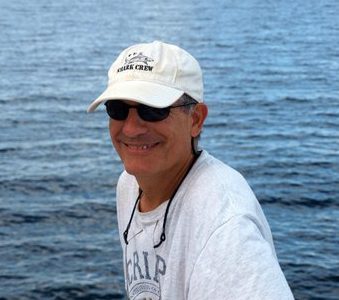
Although the cyanobacteria are non-toxic, their impact on the Baltic ecosystem is immensely negative. As the organisms responsible for the bloom die, they sink, and as they do, bacteria in the water column decompose them. This decomposition process uses oxygen, and in fact removes so much oxygen from the water that the Baltic Sea lays claim to owning the world’s largest Dead Zone, an area of nearly 20,000 square miles (about the size of New Jersey, or Slovenia) where oxygen-consuming forms (fish and crabs, e.g.) are absent. Ironically, the organisms that brought oxygen to the planet are responsible for depleting it in the Baltic.
Baltic Sea countries have devised an action plan to reduce phosphorus pollution, but the scope of the problem is so immense and involves so many stakeholders that a quick solution is not in the offing.
Serendipitous encounters like this are what distinguishes Semester at Sea from virtually all other campuses and programs ‚Äì the chance confluence of a class and a teachable moment, the kind many professors never experience in a career, but which SAS faculty and staff cannot avoid several times on a voyage. I’ll never forget my first ‚Äì seeing a pod of humpback whales not 25 meters starboard while I was teaching on the MV Explorer in spring 2010.
Unlike my whale sighting, the cyanobacterial bloom we observed did not inspire awe in my students, but in its place, curiosity. Students expressed reflection instead of joy, silence instead of palpable excitement, and in some instances, students were understandably angry. The entire shipboard community learned that the MV Explorer was more than a mere mode of transportation from port to port, and that humans are inflicting more insults than the oceans can absorb.
Although I was saddened by the actual bloom, the event gave students an opportunity to achieve the elusive sense of place in the Baltic. It confirmed why I am committed to Semester at Sea, and ensured that my students will once again listen to my lectures outside on deck this voyage.
